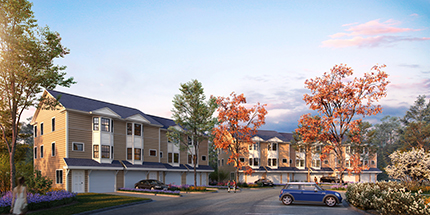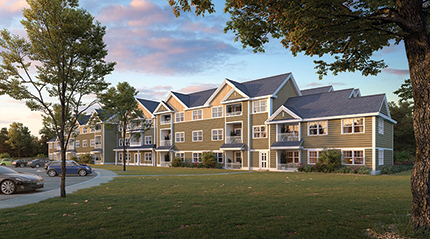

At a time when a generation of millennials - to say nothing of those still recovering from the 2008 crash of the financial markets - a concept known as Workforce Housing may have arrived at the moment it could finally move into the mainstream. (This moment is, in our view, long overdue.)
Though public and public-private funding initiatives are often involved, let’s take a moment to define what Workforce Housing is not: Workforce Housing is not subsidized low-income housing.
Then what is it?
Consider the common challenge of teachers who cannot afford to live in (or near) the communities they serve. These are working people, often with families, earning solid incomes, but below the threshold required to afford to buy or lease housing in many communities. This is not an unusual conundrum in many New England cities and suburbs.
There is both a floor and a ceiling for those who qualify to buy or rent Workforce Housing - they must have incomes above 80% of Area Median Income (AMI) but no more than 120%. In other words: it’s middle income housing, with covenants that keep it that way.
Cities, especially New England’s gateway cities, are areas that would benefit from an increase in middle class residents, as these localities have an imbalance resulting from having a few very high income earners and a disproportionately large population of low income earners.
An influx of middle-income residents broadens the tax base, improves services, it diversifies the economy as disposable income begins circulating in the local economy. Where the defined workforce is compensated by taxpayers (teachers, firefighters), this has the added advantage of keeping that money in the community.
Cities need not be the only beneficiaries: the disruptions of the coronavirus outbreak and some overhang resulting from the 2008 financial meltdown has created localized pockets where two key markets - housing and labor - are not in sync. And the college loan crisis increases the complexity by an order of magnitude.
Introducing Moorehouse Place
Comprised of a 42-unit multifamily building, plus 10 townhouses, Moorehouse Place was defined by a zoning ordinance to create perpetually affordable housing to professionals who serve York and surrounding communities.
Sited on a 6.5-acre parcel, the multifamily structure includes one-, two-, and three-bedroom units; the townhouses are three-bedroom units.
The York Housing stipulates the broad outlines of the program are for “households with incomes that are 80%-120% of area median income. At least one member of the household must be employed full-time in the Town of York (as defined by their employer) or in surrounding communities.”
Table - Qualifications for Moorehouse Place Workforce Housing (Source: YH)
Article Ten-F Workforce Affordable Housing Overlay District, 10-F.7 Selection Priorities lists preferences for qualifying for Workforce Affordable Housing in York.
• At least one member of a qualifying household living and working full-time (as defined by the persons employer) in York.
• At least one member of a qualifying household working full-time in York but living elsewhere;
• At least one member of a qualifying household living in York but working within a 10-mile radius of the boundaries of York; and
• Families employed and working with structured services, as defined by the office of General Assistance and the Town of York.
Has its moment arrived?
Plying our trade in New England’s pricy real estate waters, THA Architects has long been an advocate of Workforce Housing, and we’re glad to see it being adopted in York (and proud to have contributed to its development).
This model is not new, but its use has often been limited to cities for projects restricted to specific classes - teachers, frequently - working in unaffordable areas such as the Bay area and Los Angeles, or in cities devoid of a substantial middle class such as Newark.
As an added benefit, Workforce Housing initiatives can put local engineers and contractors on the clock, so the economic benefits often begins before the shovels even hit the ground. As a case in point: the design-builder is Pine Brook Construction in next-door Kittery; Pine Brook previously partnered with York Housing on a rehab in 2014.
This particular project - Moorehouse Place - shows that even in unlikely places such as a coastal Maine town, local creativity can create opportunities to make working households more secure in decidedly turbulent times.







